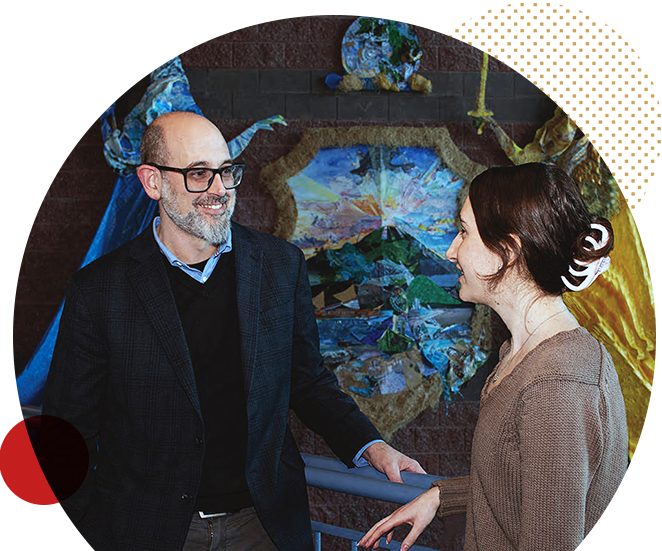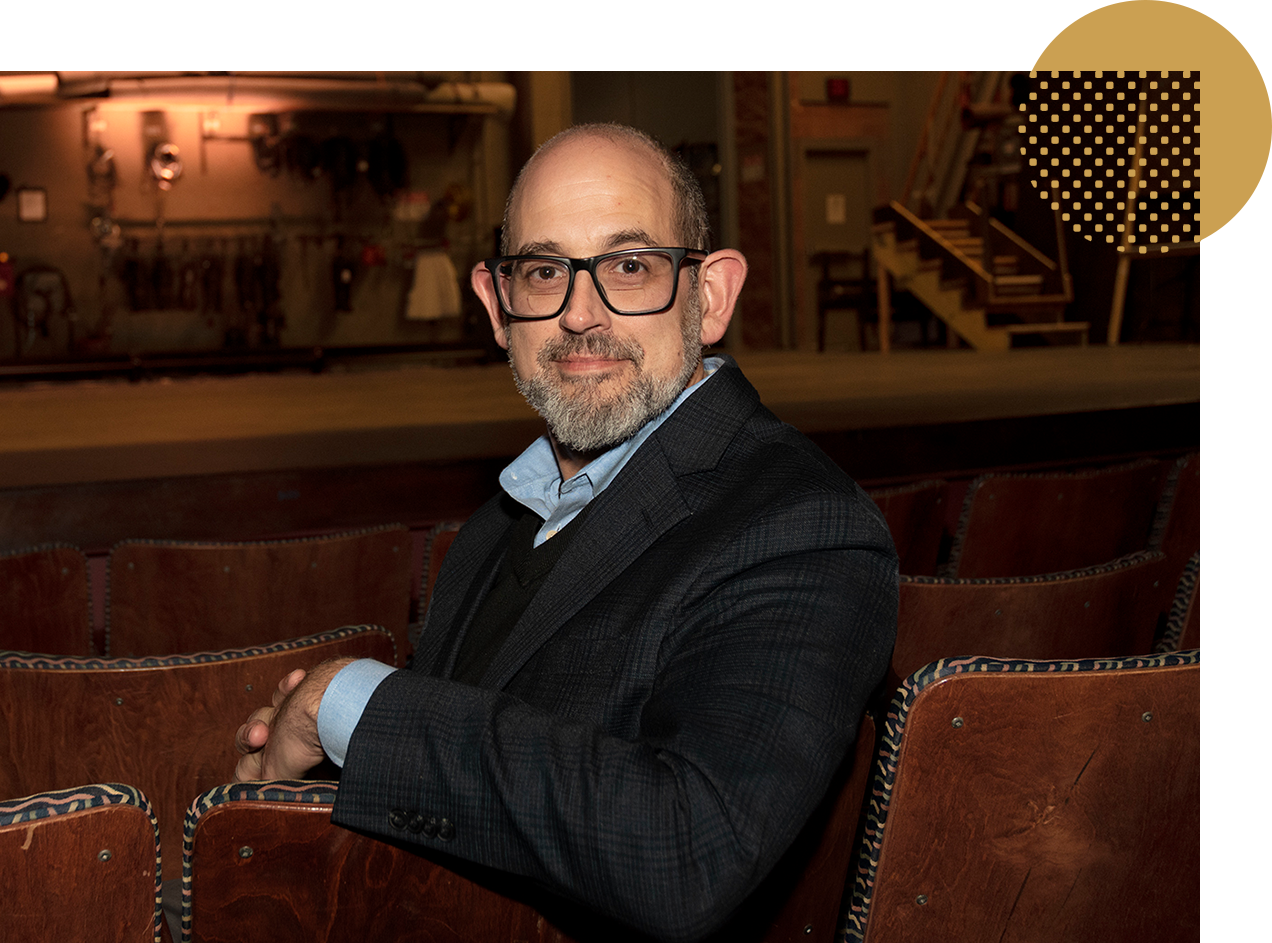
College | Long Read
Ramapo’s Newest Dean and The Transformative Power of The Arts
By Ken Goldstein, Dean of the School of Contemporary Arts | Winter 2023
Engaging with the arts is a profoundly transformative experience, one which fosters creative, intellectual, and personal growth. Research has captured this time and time again. Where the arts thrive, individuals and communities thrive as well.
Although national commissions and scholarly investigations tout the immeasurable value of arts education for students at all levels, many have unfortunately limited exposure to the arts through their schools. This has only been exacerbated by localities cutting support, which was heightened during the pandemic. The opportunities to engage, participate, and explore the visual, performing, and communication arts makes the School of Contemporary Arts at Ramapo College more important now than ever before.
And, let’s not forget—students across CA do incredible things! Our students engage in work that most of us only dream about. The scope of work is exciting. I have had the opportunity to enjoy student concerts, theater productions, and chances to see the drawings, painting, sculptures, films, and photographs that come out of some of our courses. I have read some of the scholarly papers they have written and hope to present at conferences, and I have even gotten a small glimpse of some of the game and graphic design work students have been working on. I look forward to this spring semester when I can see more. They are artists and scholars—and I find their work inspiring.
About the Dean:
Ramapo College welcomed Ken Goldstein, MFA as dean of the School of Contemporary Arts on July 5, 2022. Prior to his appointment at Ramapo, Goldstein served as Chair and Professor of Design in the Department of Theatre Arts at the State University of New York at New Paltz. In that role, he worked closely with faculty and staff to coordinate student recruitment efforts and revise production policies and also focused on the development of external funding sources to support departmental efforts.
I am a set designer by training and practice—a visual storyteller. I enter the world as a designer, meaning I ask questions, do my research, evaluate information, and work to find possibilities and solutions. I apply this as an administrator creating solutions that are simple, elegant, and sustainable—a successful solution saves energy, supports quality and provides momentum for change. Part of being a designer is stepping back from your work and honestly evaluating your progress as well as listening to critique. I reflect on my own work to evaluate my personal evolution and I will continue to do so while working collaboratively with the people of The School of Contemporary Arts.
As a theatre artist, a spirit of and a commitment to collaboration is at my core. And like all meaningful creative processes, academic and administrative collaboration harnesses the strengths of the collective, supports areas or individuals in need, and leads to results far better than an individual can achieve alone. In part, this is why I am thrilled to be surrounded by so many accomplished faculty artists and scholars, and of course talented and dedicated students —they are inspiring partners in this new adventure.
My vision for the School of Contemporary Arts is grounded in creating:
- A destination for students, the campus, local and regional communities to participate in, or engage with the Visual, Performing, and Communication Arts.
- A community where representation of diverse identities, experiences, and voices are respected, nurtured, and amplified.
- A space where exploration, imagination, and discovery are supported and questions are encouraged.
- Opportunities for students to evolve as scholars and artists and develop ideas, skills, emotional intelligence and their authentic voice.
- A place where hard work and joy coexist.
At the foundation of every area of study is the curriculum, and it must be evaluated to ensure it provides the most effective educational experience for students, and I look forward to working with the faculty to ensure the quality of the programs. Included in the redevelopment of curricula must be interdisciplinarity, experiential opportunities for students “to do what they are studying,” professional preparation, and space for the inclusion and amplification of voices that capture diverse identities and experiences. I fear that recently many students have been conditioned to believe that there is one correct answer, that the existing, or merely loudest, opinions on a subject are all that matter, and that the accessibility of information is somehow the same as knowledge.
Colleges should be a place for discourse. Institutions of higher education have an opportunity—and frankly a moral and ethical responsibility—to engage in conversations of social, racial, and economic justice. This is particularly important for public institutions, and the Arts provide an effective vehicle to do so. It is a place for students to evolve beyond these notions through participation in a journey—one focusing on exploration, discovery, understanding, expression, and creation. This is why I believe in what we do.

